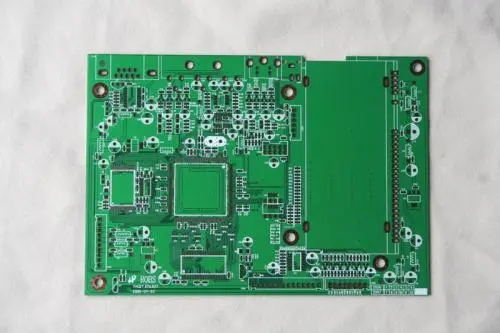Should analog ground and digital ground be separated and connected with one point at the end?

1. I think this is the case. Finally, a resistor (0 ohm) is needed to connect it, or a magnetic bead can be used. From the data point of view, it is better to use a resistor. Please advise if there is something wrong
2. The digital ground and analog ground of the PCB board I used to make are connected with a 0 ohm resistor. This is my personal experience.
3. Digital circuit grounding and analog circuit grounding are best to be stringed together with magnetic beads!
4. Most of what I see is to use a little connection
5. Is there any difference between a 0 ohm resistor connection and a direct connection? The wrench I see is generally connected by FB
6. I personally think that a single-point connection of the ground plane is sufficient, and the power supply is connected with a pie-type filter circuit. Because there are still some signal lines in the analog area to go out, the ground plane cannot be completely cut off, otherwise it will be split across. Still hope that the master will teach!
7. There should be an external 0 ohm resistor, almost all the boards I have seen are connected like this
8. Under normal circumstances, what kind of connection is used to separate the analog ground and the digital ground, as long as they don’t mix them all together, and it’s time to mix them together again. This may be the case. Usually a small system has a high density board, I think it will be better to share the ground directly. Well, I heard all this from the master!
9. I personally think that if you don’t need a 0 ohm resistor, if you use a 0 ohm resistor, its current capacity is quite strong, because the voltage drop on the 0 ohm resistor is very small, so the power consumption is not large when a large current flows.
10. Even the design used to separate the modulus and the single-point FB connection, and the effect was okay. The design I am doing now is a unified ground plane, which has not been tested yet, so I don’t know if it will work. However, the best design is to place the analog and digital devices in zones, not necessarily dividing the ground plane. Personally think: if you are afraid of digital signals interfering with analog signals, you can use the protection line approach
11. Between the digital and analog parts, if there are too many interconnected signals, and the distribution is not concentrated and irregular, do not divide the ground. The digital and analog circuit layouts are allocated in their respective areas, and the ground is unified. (Personal opinion, I hope everyone can correct me if it is wrong!)
12. Between the digital and analog parts, if there are too many interconnected signals, and the distribution is not concentrated and irregular, do not divide the ground. The digital and analog circuit layouts are allocated in their respective areas, and the ground is unified.
I agree with this point of view, but don't understand why it is okay not to divide? Ask a master.
13. There is no ground plane layer in the single panel and double panel, so in order to reduce the interference between digital and analog, a single node connection should be adopted to avoid multiple nodes.
There are ground planes for boards above 4 layers, and keeping the ground signal intact and the shortest signal loop is the key. In high-speed digital circuits, the signal selects the nearest lower plane as the loop.
Dividing the ground is a continuation of the past concept to a certain extent. In theory, the signal crossing the dividing line will cause the signal ground loop to increase and affect the ground signal. Because the division is not continuous. However, the complexity of the circuit has increased, and digital and analog chips have become more and more mixed together. It is not long and difficult to prevent all signals from crossing the dividing line. This leads to a unified ground method. Put digital circuits in one area, analog circuits in one area, and digital-to-analog circuits in the middle. If a unified ground is used, the ground signal will be more complete.
The fundamental purpose is to maintain the continuity of the ground and the integrity of the signal. The division of the ground is only a means we have used before, and now it is also a new means to adopt a unified ground. From the perspective of new research, uniformity is a better choice, but it requires careful layout.
14. I think it is not 0 ohm resistance, but magnetic strain.
15.I often make LCDTV motherboards, most of the boards I do not divide the ground, but pay attention to the placement of the sub-modules when placing it.
15. I think so too, it’s better not to divide the layout and wiring of the digital and analog parts into the digital, and the analog part and the ground are unified.
16. In fact, in a circuit system, there is only one reference plane and one ground. If there are two places, how can the entire system be connected?
17. I think it is better to have a complete ground plane, and try to open the digital device as much as possible during the simulation period. The effect is good. We have not divided the ground on the computer motherboard.
The above is the introduction of analog ground and digital ground. Ipcb is also provided to PCB manufacturers and PCB manufacturing technology.